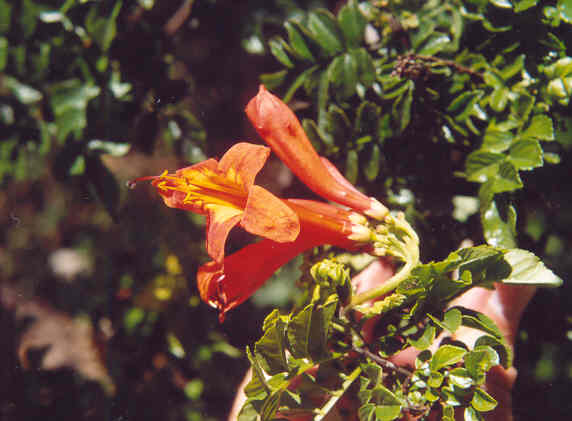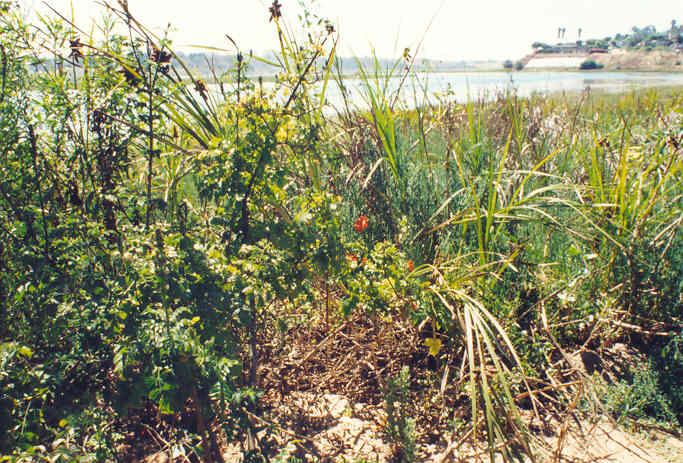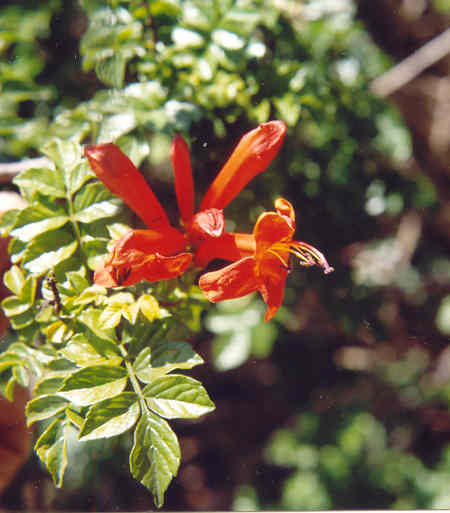
Tecomaria capensis Spach
Bignoniaceae (Bignonia Family)
South Africa
Cape-Honeysuckle
 |
Tecomaria capensis Spach
Bignoniaceae (Bignonia Family)South Africa
Cape-Honeysuckle
|
June Photo
Plant Characteristics:
Half-climbing shrub with branches 6 ft. or more long; lvs. petioled, 4-6
in. long; lfts. 5-9, broadly oval to ovate, 0.5-2 in. long, acute or acuminate,
serrate, glabrous or woolly underneath in the axils of the veins; fls. in
peduncled terminal racemes; corolla orange-red to scarlet, about 2 in. long,
with 4-parted spreading limb, the upper lip emarginate; stamens exserted; caps.
1-2 and more in. long and about .33 in. wide.
Habitat:
Takes sun, heat, wind, salt air, some drought when established.
Tolerates light shade; not good in frost areas.
Use as espalier, bank cover (especially good on hot, steep slopes),
coarse barrier hedge. (Sunset
Editors, New Western Garden Book, 1984 Edition, 482).
Escape from cultivation. Blooms
October through the winter.
Name:
Tecoma-ria, name derived from Tecoma,
alluding to its affinity. (Bailey
907). Tecoma
is a genus of shrubs of the Bignoniaceae
native to Florida, Mexico and South
America. Tecomaria is closely related but restricted to Africa.
Tecomaria was chosen as a name
for the African species to indicate the resemblance to Tecoma
of the New World. (John Johnson
from Hortus III, 1099). Capensis,
of the Cape of Good Hope. (Bailey
12).
General:
Rare in the study area, having been found only once and this on the path
from 23rd St. to Mariners Dr. where, in 1993, a large plant or plants slid
from the bluff to nearly the line of highest tide.
The plants have survived for over
fifteen years at this writing and now grow from the base of the bluff almost
back to the top where they started from.
(my comments).
Three species, grown out-of-doors in warm regions for their showy
flowers. (Bailey 907).
Text Ref:
Bailey 908; Sunset Editors, New Western Garden Book 482.
Photo Ref:
Sept 95 # 1,2,3; June 06 # 13A,14A.
Identity: by R. De Ruff, confirmed by John Johnson.
First Found: September 1995.
Computer Ref:
Plant Data 485.
Plant specimen to UC Riverside 2004.
Last edit 6/15/06.
 |
 |
September Photo June Photo